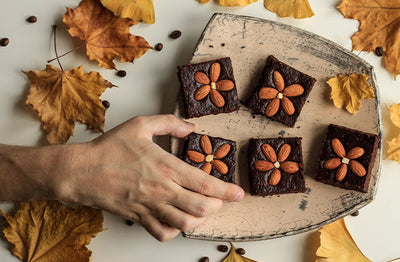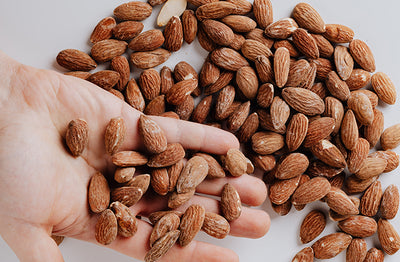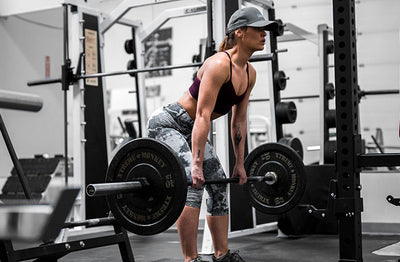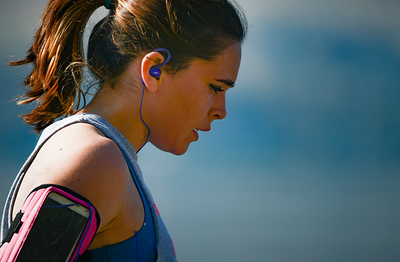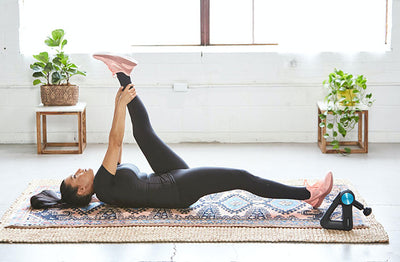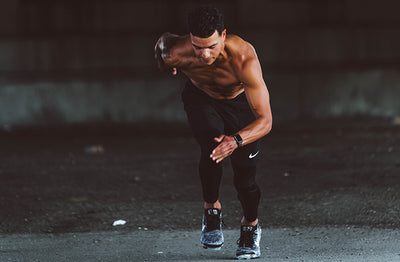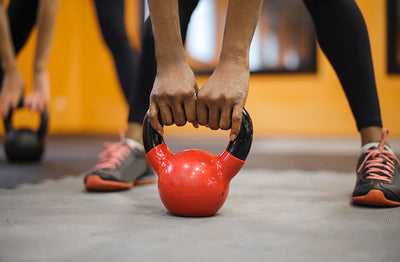?The Flat Dumbbell Press is great for building symmetrical chest and arm muscles. Unlike the barbell bench press, you can’t “cheat” by letting one arm do more work.
Facts:
-
-
- Main muscle targeted – Pecs
-
-
- Helper muscles – Triceps and Deltoids
Male | Female
Method:
As with most presses, a spotter can help. Because you’re using dumbbells, you want to make sure that you’re not over-balancing to one side, and a spotter can make sure that you keep correct form, rather than drop a dumbbell on your face.
Lay on the bench with your heels on the ground, hips and shoulders in the bench. Pick up the dumbbells with your palms facing towards your feet. While flexing from your legs to your shoulders, press the weight up, keeping it level with your shoulder line. It shouldn’t arc upwards to your eyes, downward to your belly or off to the sides at all.
When the dumbbells are extended away from you, they should be level, and close to touching.
When pressing, keep your feet planted firmly and actively drive them downward during the lift. A tight lower body will give you more control over the lift, meaning you can lift higher and heavier.
When returning the weight to your chest, don’t just let it drop. Pull it down and control it. It should not touch your chest at all, but come to a stop just a fraction before that.
Why it’s good:
It’s a big pectoral and arm exercise, plus when someone asks “What do you bench?” you can reply with “On the bar, or with dumbbells?” This usually confuses people who were planning on just making a number up to try and impress you.
What to watch out for:
Control your movements, especially if you don’t have a spotter. Being hit in the face with a dumbbell because you pushed yourself too hard is usually a mistake you only make once.
Snapshot:


Male | Female
Method:
As with most presses, a spotter can help. Because you’re using dumbbells, you want to make sure that you’re not over-balancing to one side, and a spotter can make sure that you keep correct form, rather than drop a dumbbell on your face.
Lay on the bench with your heels on the ground, hips and shoulders in the bench. Pick up the dumbbells with your palms facing towards your feet. While flexing from your legs to your shoulders, press the weight up, keeping it level with your shoulder line. It shouldn’t arc upwards to your eyes, downward to your belly or off to the sides at all.
When the dumbbells are extended away from you, they should be level, and close to touching.
When pressing, keep your feet planted firmly and actively drive them downward during the lift. A tight lower body will give you more control over the lift, meaning you can lift higher and heavier.
When returning the weight to your chest, don’t just let it drop. Pull it down and control it. It should not touch your chest at all, but come to a stop just a fraction before that.
Why it’s good:
It’s a big pectoral and arm exercise, plus when someone asks “What do you bench?” you can reply with “On the bar, or with dumbbells?” This usually confuses people who were planning on just making a number up to try and impress you.
What to watch out for:
Control your movements, especially if you don’t have a spotter. Being hit in the face with a dumbbell because you pushed yourself too hard is usually a mistake you only make once.
Snapshot:










